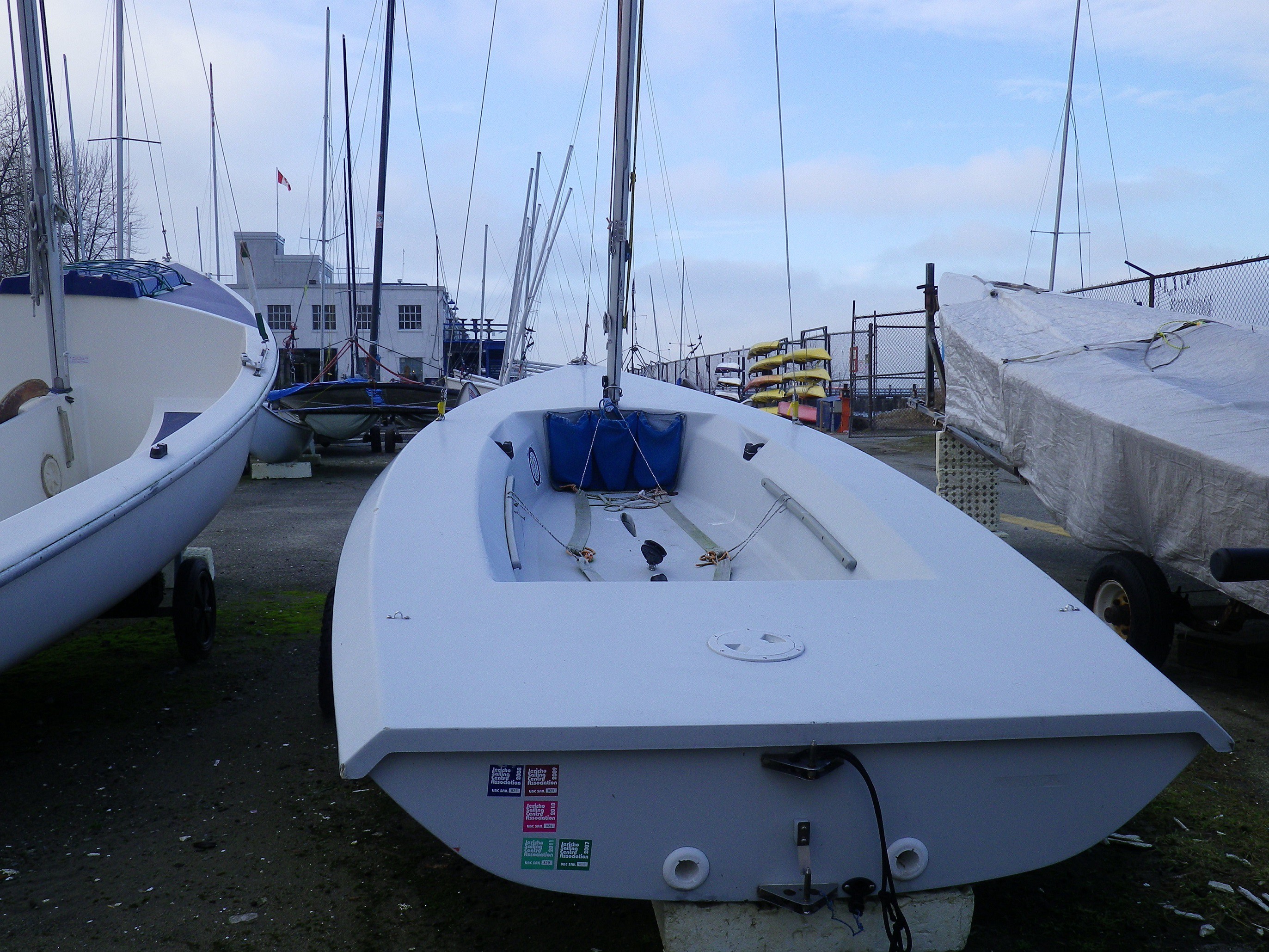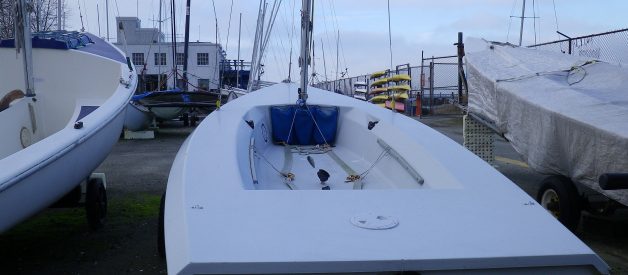A while back I was in the market to buy a used Vanguard 15, a popular 15-foot sailboat raced here in San Francisco. Here?s the list of some of the less-obvious things to look for when buying a used V15. Some of these come from Nick Adamson, a past V15 national champ who was instrumental in getting the local fleet going here in San Francisco, and Morgan Larson, a 505 world champ who?s done a bit of sailing in Vanguards.

This isn?t a complete list of things to look for ? that would be a long, boring post. Rather, these are some of the really big items to look for to quickly size up a boat.
- Mainsheet block attachment becket ? they eventually get loose and have to be reinforced (repairable but you should negotiate on the price).
- Spider cracking in on the hull ? usually means the hull has a weak spot in the spider cracked area (stay away if you see this).
- Excessive wear in the centerboard trunk ? a primary source of leaks (repairable but you should negotiate on the price).
- Make sure mast is straight ? they sometimes get bent when inexperienced folks stick the mast in the mud. (Means the mast needs to be replaced.)
- Bow dings. These are often repairable but indicate the boat?s probably had a hard life.
- Delaminated rails. These are usually repairable if they are caught early. But make sure the rail hasn?t turned mushy.
- Misaligned/misshaped centerboard trunk. This is not repairable. If you want to be competitive, this could be a show stopper.
- Corrosion in the rigging. Not a showstopper, but means that you should consider replacing the shrouds, else your mast could come down.
- Aside from these visual checks, it?s important to test sail a boat on a windy day and see how it holds up, and check out whether it leaks. Leaks from fittings or the daggerboard trunk are common on older V15s.
How to find and fix leaks in a used Vanguard 15
If the boat has water inside the tanks, here?s how to find leaks using the ?bubble test?:
To figure out where the leak is coming from, you can do a soap test. Get a bucket, dish soap, and a big sponge. Fill up the bucket with soapy water. Sponge it over all your fittings ? anything with a screw hole. Also the daggerboard trunk. Seal up the inspection port(s). Then blow on the back of the stern plug. Or, you can try sticking a leaf blower in there. You?ll see more bubbles wherever there?s a leak.
The most likely spot it?s leaking is the front of the daggerboard trunk. What often happens is that bits of dirt get into your hull. These can be from sitting in the boatyard, or from you or your crew?s boots. These bits wear between your board and the front of the trunk, and eventually create small holes that water leaks through.
The fix for this is to get some Bondo and put it in the front. Yes, Bondo is a soft material, but it?s also easy to sand, which is crucial since this is a hard spot to get into. Once dry, fully sand down. Then apply some Japanese Glide Tape to the front. The glide tape is pretty hard stuff, but also very slippery. So, it will protect the front of your daggerboard trunk from wearing out again.
To prevent this from happening again, always hose out all the dirt and gunk from your boat before rigging up. And quickly splash off the bottom of your boots just before you step in your boat.
Hull weight differences
Nick said it wasn?t necessary to weigh a V15 hull since he?s never her of major weight differences. This is in contrast to Laser hulls 20 years ago ? yes, I?m dating myself ? which could range in weight from 130 to 145 pounds.
Things that are easily fixed
There are some things that are fairly easily addressed, and should not be major sticking points when looking to buy a used boat:
- Minor rail dings.
- Mast step depressions. Seems like V15?s get these after just a bit of sailing.
- Wear on the boom, where it meets the shrouds. Assuming these aren?t too deep, they shouldn?t make a difference. Apply some plastic covers to your shrouds so that the grooves aren?t worn in further.
- Cracked plastic handrails. A number of sailors are simply taking the plastic handrails off. Just use a plastic cleat eye as a mount point for your hiking strap shock cord.
- Worn out shock cord and lines.
Once you find the right boat, here are some things you can to do fix up your new Vanguard 15.
What do you think? What other kinds of things should one look at when buying a Vanguard 15?


